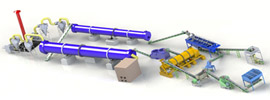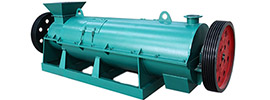Converting food scraps into organic fertilizer is an eco-friendly and resource-efficient practice. It reduces pollution from landfilling or incineration while providing natural nutrients for plants. Below are detailed steps and key considerations:
I. Preparation
- Collect Materials
- Food Scraps: Fruit peels, vegetable trimmings, coffee grounds, tea leaves, eggshells, nutshells, expired grains (avoid meat, oils, dairy—they attract pests and decompose slowly).
- Supplementary Materials:
- Dry Ingredients: Fallen leaves, straw, shredded paper, sawdust (to balance moisture and improve aeration).
- Soil or Finished Compost: Acts as a "starter" to accelerate decomposition.
- Tools: A covered container (e.g., plastic bucket), shovel, gloves, and a mask (to reduce odors).
- Choose a Method
- Hot Composting (ideal for gardens/balconies): Use a compost bin or open pile.
- Bokashi Fermentation (suitable indoors): Utilizes fermentation inoculants in an airtight container.
- Vermicomposting (small-scale): Relies on red worms to break down scraps.
II. Steps for Hot Composting
- Layering
- Bottom Layer: Spread 10 cm of dry material (e.g., leaves, sawdust) for aeration.
- Middle Layers: Alternate food scraps (wet) and dry material in a 3:1 ratio (wet:dry).
- Top Layer: Cover with 5 cm of dry material to minimize odors and pests.
- Maintain the Pile
- Moisture: Keep as damp as a wrung-out sponge (~50% humidity).
- Aeration: Turn the pile weekly to introduce oxygen and speed decomposition.
- Temperature: Aim for 50–65°C (122–149°F). If too hot, turn; if too cold, add nitrogen-rich material (e.g., fresh grass clippings).
- Fermentation & Maturation
- Active Phase: 2–3 months in summer, 4–6 months in winter.
- Signs of Readiness: Dark brown, crumbly texture, earthy smell, and no recognizable scraps.
III. Bokashi Fermentation (Indoor-Friendly)
- Set Up: Use a sealed bucket with a drainage tap. Line the bottom with newspaper or dry material.
- Add Inoculant: Sprinkle Bokashi bran over each 5 cm layer of food scraps.
- Seal & Ferment: Close the lid tightly. Vent weekly to release gases.
- Secondary Fermentation: After 2 weeks, bury the semi-finished compost in soil or mix it into a compost bin for 2–4 more weeks.
IV. Vermicomposting (Small-Scale Efficiency)
- Prepare a Worm Bin: Multi-layered design with drainage at the bottom. Fill with moist bedding (e.g., coconut coir, decayed leaves).
- Introduce Worms: Add ~1,000 red worms per kg of food scraps.
- Feed Scraps: Chop scraps and bury them 5 cm below the bedding to avoid direct contact with worms.
- Harvest Castings: Collect worm castings from the top layer every 2–3 months, sieving for use.
V. Key Considerations
- Avoid Adding:
- Meat, fish, dairy (pest and pathogen risks).
- Oils, bones (slow decomposition, attracts animals).
- Diseased plant material (may spread pathogens).
- Odor Control:
- Add dry material to absorb excess moisture.
- Avoid over-packing or over-watering.
- Speed Up Decomposition:
- Chop scraps into smaller pieces.
- Supplement with urea or finished compost for nitrogen.
- Safe Usage:
- Ensure compost is fully matured (odorless, no residues) before application.
- Avoid direct contact with root vegetables (e.g., carrots) due to potential pathogens.
VI. Application Methods
- Direct Mixing: Blend mature compost into soil (1:3 ratio) to improve structure.
- Compost Tea: Soak compost in water (1:10 ratio) for 1 week, strain, and dilute before watering plants.
- Mulching: Spread a layer of compost around plants to retain moisture and suppress weeds.
By following these methods, food scraps can be transformed into nutrient-rich organic fertilizer, promoting plant health while reducing environmental impact. Choose a technique that suits your space and needs, and maintain consistent management for optimal results.
This translation preserves technical accuracy while adapting phrasing for natural English flow. Let me know if you'd like any refinements!
 Send us a Email
Send us a Email Wulong Industrial Cluster
Wulong Industrial Cluster Have any question?
Have any question?



















